ABOUT THE CONFERENCE

Following the great success of the 2020 conference, the European JMAG & PSIM Users Conference will be held virtually from September 27th to October 1st, 2021.
This free conference is a perfect opportunity for all stakeholders involved in vehicle electrification to learn more about how to:
– Use integrated model-based design solutions to shorten and fasten development cycle
– Bridge the gap between power electronics and motor design
This event will bring together electrical & electromechanical power system experts, software users and developers and Powersys’ team.
This year we will have the pleasure to welcome as keynote speakers:
- Shafigh Nategh and Bharadwaj Raghuraman, Volvo Cars – Traction Motor Design and Optimization for E-mobility Applications
- Mohamed Essam Ahmed, AVL – Advanced Electric Drive Modelling with Temperature and NVH Adaptive Control
- Dr. Antonio Lázaro, Carlos III University of Madrid – The Future of Power Electronics Control
To discover the companies that will share their real-world experiences and the contributions from Powersys’ valued partners, download the full program of the conference.
WHY ATTENDING

Exchange with attendees, developers and our team about your experience and your electrification challenges. Schedule 1&1 meeting with our software experts and support team.

Discover the upcoming developments of the simulation software we provide and express your software development needs.

Attend live simulation software user presentations providing insigths and real-world experiences. Access to presentation recordings if you missed the lives.
AGENDA
Day 1
Sep. 27, 2021
Day 2
Sep. 28, 2021
Day 3
Sep. 29, 2021
Day 4
Sep. 30, 2021
Day 5
Oct. 1, 2021
| 3:30 am | 9:30 am | 1:00 pm | 4:30 pm |

Welcome Note / User Conference Introduction
Dr Takashi Yamada, JSOL Corporation & Vincent Capron, Powersys
Opening Remarks | Introduction to Powersys | Conference Outline
| 4:00 am | 10:00 am | 1:30 pm | 5:00 pm |

Development planning of JMAG – Session time has changed!
Dr Takashi Yamada, JSOL Corporation
JMAG is constantly being worked on to achieve highly accurate and high-speed simulation. JSOL would like to share our progress from the past year including parallel solvers to accelerate speed as well as GUI improvements aiming for increased productivity of analysis workflow. Analysis technologies we are currently focusing on and our plans for incorporation will also be covered in this presentation. Design exploration is an important topic this year. This presentation will detail the present and future of JMAG.
| 5:00 am | 11:00 am | 2:30 pm | 6:00 pm |

Keynote: Traction Motor Design and Optimization for E-mobility Applications – Session time has changed!
Shafigh Nategh and Bharadwaj Raghuraman, Volvo Cars
This presentation demonstrates the study carried out on different permanent magnet motor topologies that can be used in e-mobility applications. Considering the environmental effects of rare earth elements used in permanent magnet materials, focus in this presentation is placed on the solutions with less rare earth element magnets. Additionally, challenges in using non rare earth magnets in the rotor structure of permanent magnet motors are reviewed and discussed. The risk of demagnetization under short-circuit condition is considered as one of the main challenges in using non rare earth magnets that needs attention when designing the electric propulsion system. As shown in presentation, proper rotor design can significantly improve the risk of demagnetization allowing short-circuit in larger operation range. In addition, obtaining an acceptable level of performance and efficiency as using rare earth elements is possible to achieve. This has been enabled using advanced JMAG Optimization functions incorporating different design aspects into the optimization process.
| 6:00 am | 12:00 pm | 3:30 pm | 7:00 pm |

Effect of the Interaction of Different Manufacturing Imperfections on the Unbalanced Radial Forces in a Sub-Fractional HP Single-Phase BLDC Motor
Nejat Saed, Technical University of Graz
The increasing electrification of vehicles not only applies to the main drive systems, i.e., either replacing the combustion engine with electric machines or the parallel operation of both, but also to the less visible auxiliary drives, e.g., water pumps or LED-headlight fans. Remarkable
advantages of single-phase BLDC motors over their brushed counterparts, such as higher power density and low cost, make them a suitable choice for such auxiliary drive applications. The overall noise reduction of auxiliary drives has also attracted increased attention recently, since the noise of auxiliary systems is no longer masked by the main drive systems, as in the case of conventional, combustion engine driven, cars.
Manufacturing imperfections, inevitable in mass-produced sub-fractional HP motors, generate a distorted magnetic flux density waveform and additional magnetic forces, known as unbalanced magnetic forces (UMFs), and may eventually cause noise and vibration. Dynamic and static eccentricity as well as non-uniform magnetization are known as the dominant sources of the UMFs. This study analyzes the effect of the interaction of these different types of manufacturing imperfections on the unbalanced radial forces, focusing particularly on their phase difference. It shows the wide range of resulting distributions of the magnetic force that significantly exceeds those of the single-effect analyses. This explains the widespread structure-borne noise observed with sub-fractional HP machines, also reflected in extensive experimental investigations. The analyses also explore how dynamic eccentricity can counteract non-uniform magnetization and vice versa.
| 8:15 am | 2:15 pm | 5:45 pm | 9:15 pm |

Keynote: Advanced Electric Drive Modelling with Temperature and NVH Adaptive Control – Session time has changed!
Mohamed Essam Ahmed, AVL
The rate of vehicle electrification has risen recently, which leads to the realization that the development of each component separately is not sufficient. The reason for this is that each component (electric machine, inverter, even cables and busbars) has a significant impact on the performance of each other, as well as on the whole system level.
The current state of art in permanent magnet drives mostly adopts a motor control where the calibration is either independent of e-machine operation temperature or dependent only on the e-machine winding temperature, which can lead to the loss of optimal control and performance due to magnet temperatures away from the nominal one. In addition, NVH aspects such as torque ripple or stator forces are commonly addressed at the e-machine layout design stage only.
In this contribution, an advanced modelling of a full electric drive system is presented. Finite Element Analysis (JMAG) is jointly used with model-based and system analysis (PSIM) to develop temperature- and NVH-dependent dynamic control, where the electric machine can be quantitively characterized in detail, and, therefore, the control ensures optimal performance.
• Benefits of such analysis:
• Optimization and improvement of an existing electric drive (potentially via the over-the-air updates)
• Early-stage multi-objective and multi-domain electric drive optimization
• Faster front-loading and better calibration for testing
• Magnets (e-machine) health monitoring
• Optimal electric drive performance even in temperature ranges away from the nominal
| 9:30 am | 3:30 pm | 7:00 pm | 10:30 pm |

PSIM – Present and Future Development
Mark Qin, Powersim
In this talk, we will present new functions and features currently being developed that will be included in the upcoming release. They include new features in the Power Supply Design Suite and EMI Design Suite, with new design templates and function blocks for CLLLC resonant converters and EMI analysis for different EMI filter types and for 3-phase systems. In addition, a set of tools are developed for product design validation and optimization. They include Monte Carlo analysis, sensitivity analysis, fault analysis, and parametric optimization.
Also, the roadmap for future development plans will be discussed.
| 10:15 am | 4:15 pm | 7:45 pm | 11:15 pm |

Partial Power Converter (PPC) as an interface between DC microgrid and battery energy storage system
Naser Hassanpour, Tallinn University of Technology
Conventional full power converters process all the power transferred between input and output. Therefore, they have higher power loss and lower efficiency. One of the most promising solutions to boost the converter efficiency is to create a direct path between input/output to deliver a higher percentage of power without being processed by the DC-DC converter. These types of DC-DC converters are called Partial Power Converters(PPC). In these converters, only a small share of power is being processed, which in our case is 27%. The result is having low power elements, a high power density converter, and reaching higher efficiencies. A PPC-type DC-DC converter is simulated in PSIM to validate the theoretical analysis
| 3:50 am | 9:50 am | 1:20 pm | 4:50 pm |

New Express delivery: High-end motor design tools
Ahmed Shoeb, Powersys
A new interface specialized in motor design is now available. Designers can investigate design proposal using JMAG-Express. Modelling and calculation are performed by JMAG-Designer in accordance with input design parameters, and calculation results are displayed in JMAG-Express.
| 4:20 am | 10:20 am | 1:50 pm | 5:20 pm |

Suppression of Torque Ripple for Consequent Pole PM Machine by Pole Shaping Method
Ji Qi, Sheffield University
Consequent pole (CP) permanent magnet (PM) machines have attracted considerable interest as a means of reducing machine cost through a marked reduction in the volume of permanent magnet required to meet a particular torque specification. However, the presence of a large torque ripple that can result from the CPPM structure can hinder their adoption in some applications, especially for the dominant third order torque ripple. Several design-specific modifications have been proposed to ameliorate torque ripple, but it is common practice to adopt similar PM and iron pole shapes, an approach which does not fully account for the different features between PM and iron poles in CPPM machines. Additionally, the generalized principles underpinning this behavior have not been fully established. Consequently, the effect of the different pole shapes on torque ripple will be analyzed and an asymmetric pole shaping method will be proposed to reduce the torque ripple.
| 5:05 am | 11:05 pm | 2:35 pm | 6:05 pm |

Calculation of Electromagnetic Forces in Centric And Eccentric Permanent Magnet Synchronous Reluctance Machines
Tahar Hamiti, Nidec PSA eMotors
For rotor dynamics analysis the knowledge of average value and harmonic content of the unbalanced magnetic pull (UMP), caused by rotor eccentricity, are required to be calculated with high accuracy. In so doing, the machine is simulated without any symmetry. The mesh accuracy and regularity are of prime importance to ensure the result is exempt of numerical errors first on a model without eccentricity before tackling the eccentric case. This work presents a case study of force calculation considering three methods: 1- integration of Maxwell stress tensor using airgap flux density components; 2-summation of teeth forces calculated directly from the post-processing module and; 3-the lumped force on the rotor, also extracted directly from the post-processing module. Sensitivity study to the airgap mesh number of layers and circumferential divisions is performed and some comparative results will be shown.
| 5:50 am | 11:50 pm | 3:20 pm | 6:50 pm |

Using Cradle CFD and JMAG in emotors for better handling thermal challenges
Elia Cipolato, Hexagon MSC Software
In recent years, the use of motors has been increasing in many industries due to environmental concerns. Especially in automotive industry, as the shift to electric vehicles (EVs) accelerates globally, the demands of developing motors has requested them to be smaller, more efficient, and safer.
One of the most important CAE efforts in motor development is to solve thermal challenges. This requires simulating temperature distribution using the 3D model with complex geometry and consider the most suitable cooling method for it. Cradle CFD, the thermal fluid analysis software in Hexagon solution, achieves it by collaborating with JMAG, the electromagnetic field analysis software.
Cradle CFD allows to import the Joule losses simulated by JMAG as heat condition, predicts heat transfer near the surfaces and simulates temperature distribution with the complex model of motor created by its powerful meshing. In this presentation, we introduce the workflow and the benefits of using Cradle CFD and JMAG.
| 8:00 am | 2:00 pm | 5:30 pm | 9:00 pm |

The Future of Power Electronics Control
Dr. Antonio Lázaro, Carlos III University of Madrid
Power electronics is a key enabling technology in the process of electrification of means of transport and energy production systems.
Digital control platforms will play a key role in this process. At present, converter control enables functionality and communications to be fulfilled. In the near future, these capabilities should grow exponentially, endowing the converter with remarkable intelligence and adaptability to operating conditions.
Some of the advanced functions that will be available in the future are as follows:
• Multi-converter control
• Real-time optimization of inverter and DC-DC modulators
• Compensator Auto-tuning
• Real-time estimation of grid and generator parameters
• Cloud-computing
• Machine learning of energy-storage filters
• For high-availability safe systems
• Parallel processing
• HIL systems and State-estimators
This presentation will give examples of these advanced functions and show some of the future digital platforms. Finally, for the case of control algorithms, a methodology will be shown, based on the use of SmartCtrl, PSIM and Vivado HLS to very quickly develop and implement control functions.
| 8:45 am | 2:45 pm | 6:15 pm | 9:45 pm |

High-Efficiency and Low-THD HF 500W-1.5KW BTP PFC Using GaN Technology
Siavash Heydarzadeh, V-Research
Today’s BTP (Bridgeless Totem Pole) boost PFC topology becomes more popular because of GaN MOSFET characteristics such as zero reverse-recovery, low output/gate capacitance/charge, etc. This presentation proposes the optimum 500W to 1.5-KW solutions, based on BTP boost PFC topology. The GaN technology and high switching-frequency are applied for achieving maximum efficiency and low THD while preserving high power density. The topology/magnetic designs and hard/soft(ZVS) switching control methods will be reviewed briefly. Finally, the practical challenges, considerations and solutions will discuss to reach maximum performance and functionality.
| 9:30 am | 3:30 pm | 7:00 pm | 10:30 pm |

Performance Investigation of Drone Propulsion Systems with High-performance Slotless PM Motors
Zhaoqiang Zhang, Alva Industries AS
Inverter switching has a dramatic impact on the performance of drone propulsion system, especially when slotless PM motors are used. Specifically, the switching affects the choose of control methods, wire types, motor cables, magnet loss, stator core loss, etc. This talk will present how the inverter simulation software PSIM has been employed to address these issues in Alva product development, for achieving optimal system performance.
| 10:15 am | 4:15 pm | 7:45 pm | 11:15 pm |

Introduction to EMI Analysis and EMI Filter Design
Amit Kumar, Powersim
Conducted EMI emissions can cause major issues if left to the end of a product development cycle. PSIM allows designers to reliably simulate and converge with non-ideal switches, parasitic inductance, and common mode capacitors.
In this presentation, we will learn how to use the EMI design suite to design input filters for the power supply or motor drive system. With the ability to overlay an EMI standard onto the generated FFTs, we can use our automated filter design tools to simplify EMI compliance.
We analyze some examples of converters and motor drives and how you can use the general template for your topologies. We will also demonstrate our new template in the design suite for three-phase systems.
We will have the following learning through this presentation:
- Use our LISN element (line impedance stabilization network) to measure DM/CM EMI noise
- Place stray capacitance to the ground for common-mode noise with typical values
- Setup a level 2 switch device
- Overlay a conducted EMI standard (CISPR, MIL, FCC, custom, etc.)
- Identify problem frequencies to be targeted by the filter
- Implement the filter designed by the design suite and verify
While nothing can fully replace a full EMI chamber test, with our design suite, we are sure that your time in the chamber will be more productive, and your certification process will be less expensive and faster.
Come and see the EMI design tools and workflow in action.
| 3:50 am | 9:50 am | 1:20 pm | 4:50 pm |

Integration study: new circuit control features to enable system simulation including multiple models – Session time has changed!
Yves Thiolière, Powersys
It is now possible in JMAG-Designer to enable studies with system simulations that include multiple physical phenomena and models. Multiples FEA model and JMAG-RT models can be integrated for simulating whole complex physical system, such as electrical , thermal, and control.
| 4:20 am | 10:20 am | 1:50 pm | 5:20 pm |

Using JMAG Script Editor to model electrical windings of any configuration
Vladimir Semin, Institute for Digitalization and Electrical Drives – Heilbronn University
JMAG Designer allows several ways to create and simulate windings in electrical machines. The existing tools however have several limitations not allowing every possible existing winding configuration to be applied to the model.
In the presentation, a possible approach for easily assigning electrical winding configuration to an existing geometry is proposed: The method uses the JMAG’s built-in script editor, as well as coupling with an external software tool for winding generating.
| 5:05 am | 11:05 pm | 2:35 pm | 6:05 pm |

E-motors and e-axles design by simulation
Michelle Merelli, EnginSoft SpA
Market requirements and the need for reduced emissions are pushing the demand for hybrid and electric traction both in the transportation and in the off-highway sectors. Over the next years e-drive units and e-axles will continue to evolve to meet industry specific requirements like increase in power density, efficiency improvement, weight and cost reduction, reliability.
One key-factor for the development of e-axles is the thermal management. The e-motor temperature strongly affects both the efficiency and life of the system and, with the increasing power density, external water-cooling is not effective. For this reason, internal oil jet cooling concepts are already used by several players in order to cool down the components more efficiently. Moreover, the growing integration of the e-motor and transmission units allows for the use of the transmission fluid as the coolant in the e-motor. The development of this type of integrated cooling and lubrication system is still very dynamic with multiple players exploring its potential and limits.
In this frame, with new concepts to be designed and compared, the adoption of simulation techniques since the early stages of the development process is crucial to drive the design of the e-motor cooling system and to optimize the lubrication of the e-axles.
In this presentation the development process of virtual prototypes of oil cooled e-motors and axles is described with a particular focus on the oil flow analysis and optimization. The use of mesh-less CFD techniques, like the Moving Particle Simulation, can make the development of virtual prototypes much faster than Finite Volume CFD. The result is that the oil flow in a gearbox or e-motors can be virtually analyzed in a few days. In this way it’s possible to predict the effect of different rpm, oil levels and temperatures and even the effect of dynamic operating conditions, like cornering, on the lubrication of gears and bearings, both in case of splash lubrication and in case of forced lubrication.
Based on these predictions the design of the gearbox and e-motor can be optimized before having a physical prototype and CFD simulation becomes a design tool.
Two case studies, one about a reduction gearbox and one about oil cooled e-motor will be presented with a comparison of numerical predictions against experimental data.
| 5:50 am | 11:50 pm | 3:20 pm | 6:50 pm |

A Better Way to Design and Test Motor Drives
Petar Gartner, Typhoon HIL
Automotive industry has widely accepted Model Based Design (MBD) for control software development; motivated by software’s safety critical nature and the need to comply with ISO 26262. The problem in the past was lack of ultra-high fidelity real-time Controller Hardware in the Loop (C-HIL) simulation of inverter and electric motor thus creating a gap in the workflow when evolving a model from Model in the Loop (MIL) and Software in the Loop (SIL) to C-HIL. In this talk we demonstrate Typhoon’s ultra-high fidelity motor drive Hardware in the Loop (HIL) simulation with seamless integration with JMAG FEA machine design software. We will show a typical workflow for design and testing of EV drivetrain starting with JMAG FEA motor design, followed by export of spatial-harmonic PMSM motor model, with iron losses included, from JMAG-RT into Typhoon HIL simulation environment, followed by controller Hardware in the Loop simulation in Typhoon HIL HIL404 simulator interfaced with a real Engine Controller Unite (ECU) in the loop. Furthermore, we will briefly describe HIL interface towards the test automation and test management software.
| 8:00 am | 2:00 pm | 5:30 pm | 9:00 pm |

Behavioural modalization of a residential microgrid using PSIM look-up tables
Jordi Clos Garrido, UPC
The aim of this technical presentation is to explain the application of PSIM look-up tables (among other PSIM blocks to implement energy flow criteria) to simulate a microgrid behaviour. Within the explanation, data sources to fill up look-up tables and each model of each microgrid component will be described, from photovoltaic field passing through batteries and reaching power grid and domestic loads.
This model is used to determine the viability of implementing a microgrid, so incomes and expected energy bill are also simulated using PSIM assuming Spain surplus energy policies.
| 8:45 am | 2:45 pm | 6:15 pm | 9:45 pm |

AFE with a three-level inverter, how to control it and its model.
Egor Kulik, LLC SMC Vector
AFE converters are widely used in electrical engineering – solar plants, wind turbines, frequency converters. The presentation describes how to use PSIM to simulate a hardware and a control system at the design stage of an AFE converter. A three-level T-type inverter is considered. The design of a power electronics part, PI regulators setup , PWM technique, power consumed analysis and thermal analysis are described.
| 9:30 am | 3:30 pm | 7:00 pm | 10:30 pm |

Design of High-Performance Motor Drives
Amit Kumar, Powersim
There are three main parts to a motor drive: the motor, the inverter, & the control. The design of any part of the motor drive system usually requires a working motor drive control algorithm. PSIM will automatically calculate a working control algorithm based on user input specifications using Motor Control Design Suite (MCDS). The advanced control algorithms of field weakening (FW) and maximum torque per volt (MTPV) control are included in our design suite. We will leverage this ability to quickly design and compare switch types, capacitor values, or other power hardware elements. We will compare different motor models with the same power level hardware. The design tools in the MCDS leverage the automated current and speed/torque loop control algorithms of PSIM and allows designers to get on with their job instead of getting stuck with control issues.
We will learn how to import realistic machine model parameters from the FEA tools JMAG, and the free online tool JMAG express online. We can quickly import these motor parameters into our design suite producing closed-loop motor drive simulations.
We will also demonstrate our improved capabilities for the analysis of the DC bus, including the introduction of non-ideal switches, common-mode capacitances, long cable models, and parasitic bus inductance for EMI pre-compliance simulation.
Come and see how the design tools can be leveraged to speed up power stage design, motor design, control system design, and integrated motor drive in larger systems.
| 4:20 am | 10:20 am | 1:50 pm | 5:20 pm |

Modeling, analysis and desing of large line-start permanent-magnet synchronous motors
Amedeo Vannini, University of Pisa & Nottingham
Permanent magnet synchronous machines provide some benefits with respect to wound-field solutions, including lower losses, greater simplicity and higher reliability. This makes them potentially interesting also for large power applications involving continuous operation and large costs in case of sudden failure, such as pumps and compressors for pipelines, which are usually fed directly from the mains for the same reasons. The analysis and design of large synchronous machines featuring both magnets and squirrel cage using both analytical and simulation models is presented, investigating steady-state conditions as well as start-up transients under different assumptions about the grid.
| 5:05 am | 11:05 am | 2:35 pm | 6:05 pm |

FEA Modelling of Eddy Current Losses on Permanent Magnets of PMSM motor for EV traction application
Nirmalya Panigrahi & Vinayak Gupta, Jaguar Land Rover
The losses due to eddy currents in permanent magnets of a motor, have significant impact on the magnet temperature and its performance. While designing Battery electric vehicles (BEVs) this can influence the range and the cooling system for the motor assembly. The rare-earth magnets have higher conductivities which leads to significant magnet losses at maximum speed operations. In case of pulse width modulated current input to the 3-phase motor, the high-frequency harmonics can cause considerable rise in the magnet losses. This paper presents a detailed finite element analysis (FEA) modelling which takes into account the 3-D eddy current flow with a magnet to analyze and predict losses in a magnet with higher accuracy.
| 5:50 am | 11:50 am | 3:20 pm | 6:50 pm |

Export of Unprocessed JMAG Field Solution Data for Custom Post-Processing and Visualization
Robin Köster & Dr.-Ing. Björn Deusinger, Technical University of Darmstadt
The availability of unprocessed field solution data obtained by JMAG allows for custom post-processing steps, which may for example be implemented in MATLAB. In this sense, the export functionality of the JMAG GeneralInterface allows for another option to integrate JMAG into the automated processing chain for the motor design by providing inter alia the vector potential and the magnetic flux density along with the corresponding mesh (node positions, relation to edges). Custom post-processing functions may for example be required in case of complicated material behaviour, whereof the analytical estimation of AC loss in superconducting windings is discussed as an example. Besides, the accessibility of raw data may also be desired, if custom visualization schemes should be applied to the field solutions, e.g. in order to align to preceding schemes from different software. This talk is therefore on the automated export of JMAG field solutions with a short outlook on how to work with the obtained data.
| 7:30 am | 1:30 pm | 5:00 pm | 8:30 pm |

« Optimization » capability for a 3-Phase PWM Rectifier
Adrien Michel, Powersys
A new feature based on » optimization » capability has been added into the new PSIM version.
By using the optimization process, engineers will have the possibility to optimize their design, run sensitivity + Monte Carlo Analysis and finally add some faults into the circuit.
This goal of this presentation is to show how to use those new tools in order to optimize a 3-phase PWM rectifier and get a robust design model.
| 8:00 am | 2:00 pm | 5:30 pm | 9:00 pm |

Power Converters for EV Battery Charging Systems
Vitor Monteiro, Universidade do Minho
Power Converters for EV Battery Charging Systems: Aiming to contribute to diminishing the negative effects caused by the transportation sector, the full adoption of electric mobility is increasingly a reality. In this context, power electronics technologies play a crucial part to support the full adoption of electric mobility, including on-board and off-board battery charging systems, as well as new topologies with innovative operation modes for supporting the power grid. Embracing these features, it will be presented power electronics technologies for electric mobility where some of the main technologies and power electronics topologies are presented and explained.
| 8:45 am | 2:45 pm | 6:15 pm | 9:45 pm |

Wireless dynamic charging systems for electric vehicles
Zariff Gomes, Vedecom
The dynamic wireless inductive charging technology can mitigate the cost of the charging infrastructure and electric vehicles, moreover increasing its efficiency and acceptability. At this presentation, a 30kW dynamic wireless charging system will be presented and the introduction to the VERA project (VEDECOM) and INCIT-EV project (European Project) where the technology is adapted to the real case conditions and demonstration.
| 9:30 am | 3:30 pm | 7:00 pm | 10:30 pm |

Regenerative Breaking Basis using PSIM & SmartCtrl
Dr. Antonio Lázaro, Carlos III University of Madrid
Regenerative braking considered as a general concept, in which the load is eventually able to return energy to the generator or a storage system, is one of the bases for increasing the energy efficiency of an electric vehicle or a broader electrical system.
In this paper are presented the basics of how to handle the energy returned by a motor drive to be stored in a supercapacitor battery, through a bidirectional DC-DC converter, keeping the voltage of the intermediate DC BUS and the supercapacitors stable.
Since the simulations focus on power transfer, averaged models in PSIM are proposed to reduce simulation time and it will be shown how to use SmartCtrl to design the control loops of the bidirectional converter: current control, voltage control on the DC BUS and voltage control on the supercapacitors.
Finally, a simulation of the complete system will be shown: motor drive, bidirectional DC-DC converter, super capacitors and source converter.
| 3:50 am | 9:50 am | 1:20 pm | 4:50 pm |

Multi-physics: Compatible with 3 coupled analyses of magnetic field, heat and structure
Didier Zefack, Powersys
The effect of temperature, stress and deformation can be accounted for through a coupled analysis using a 2D model for magnetic field analysis and structural analysis, and a 3D model for thermal analysis
| 4:20 am | 10:20 am | 1:50 pm | 5:20 pm |

Using JMAG in a multidisciplinary/multi-platform development environment
Zoltan Nadudvari, Rolls Royce
The electrification of aircraft is playing a significant role on the path to reduce the aviation industry’s environmental footprint. The industry poses specific challenges for the development engineers due to the strict requirements and design boundary conditions. Developing an electrical drive train which meets the high safety standards, the desired efficiency and power to weight ratio requires a multidisciplinary design approach to cover all the requirements and design aspects. In an agile environment different engineering teams often use different platforms / ecosystems (e.g. Matlab, Simcenter, Ansys) to deliver the results in time and face the challenge of real-time data exchange between the disciplines. JMAG offers a wide range of flexibility to share simulation results with 3rd party ecosystems. In this presentation a workflow will be presented where the effect of mechanical stress due to thermal expansion on the iron core of an electric machine can be taken into account to get a more precise loss and performance result.
| 5:05 am | 11:05 am | 2:35 pm | 6:05 pm |

Multiphysics Simulations for Electrical Components Design with MpCCI
Pascal Bayrasy, Fraunhofer
Many of the technological advances over the past decades have occurred by miniaturization. In miniaturization, the shape, size, and characteristic features of the devices must be ensured to allow them to be appropriately integrated and packaged in a successful industrial product. Reductions in weight and space provide new aspects to consider during the design of electrical components. The prediction of heating and cooling processes is of eminent importance in the development of electrical devices. The thermal potential of the materials involved in the product need to be exploit in order to achieve the performance at the customer’s specified operational temperatures. By using a multiphysics approach designers and engineers are able to take in account in earlier stage the temperature dependency of the magnets which affect the final torque for an electrical motor for instance. The MpCCI CouplingEnvironment is a multiphysics enabler to extend the JMAG solution range with other advanced CFD and FEA simulations codes. Different methods will be presented to address different aspect of the design of electrical components.
| 5:50 am | 11:50 am | 3:20 pm | 6:50 pm |

A Multidisciplinary Approach to Integrated Motor Modeling using GT-SUITE and JMAG
Peter Stopp, Gamma Technologies
As electric vehicles become increasingly more mainstream, an increasing level of refinement is required for a modern driving experience. As efficiency and NVH targets become increasingly more stringent, an integrated CAE modeling approach is required to predict system behavior early in the development cycle. This integrated CAE approach requires multi-disciplinary modeling, of electromagnetics, mechanics, and thermal systems together. While these analyses may typically be managed by different engineers, or even different departments, there is a growing need for increased collaboration. This presentation will detail several avenues for increased collaboration of motor integration to improve NVH behavior.
| 7:40 am | 1:40 am | 5:10 pm | 8:40 pm |

Efficiency Map improvements – Session time has changed!
Ahmed Shoeb, Powersys
In the V20.2 several improvements have been implemented concerning the efficiency maps analysis such as outputting an RT file from the efficiency map, including the magnets Eddy current loss calculation in the speed priority mode, reduce the modelling time in the conversion workflow from speed priority to accuracy priority mode.
| 8:00 am | 2:00 pm | 5:30 pm | 9:00 pm |

Flying capacitor Boost in SEMITOP E2 in PV applications
Fabio Brucchi, Semikron
This presentation will focus more on the dimensioning of a three-level MPPT Flying capacitor application for 1500VDC Solar and ESS converters. Showing both part of the presentation may let appreciate the flexibility of PSIM both in semiconductor analysis and application dimensioning.
| 8:20 am | 2:20 pm | 5:50 pm | 9:20 pm |

1200V Diode Technologies comparison
Fabio Brucchi, Semikron
This presentation will be related to the Tandem diode application (650V IFx’s Rapid diode in series) and will cover the simulation of the Tandem diode more at semiconductor level. It will mainly focus on how PSIM helped in findings critical aspects of this semiconductor solution.
| 8:40 am | 2:40 pm | 6:10 pm | 9:40 pm |

Resonant Converter Design and Optimization
Amit Kumar, Powersim
This presentation will cover how to design, optimize, and close the loop on resonant converters using our new resonant Power Supply Design Suite in PSIM.
We will demonstrate our new and exciting time-domain-based Steady-State Solver tool, Design Curve tool, and Parameter Optimization tool to find optimum values of the resonant parameters, operating frequency range to maintain ZVS, quality factor, magnetics ratio, and other design parameters.
We will study and optimize resonant LLC tank and resonant CLLLC tank for popular resonant applications for design examples.
As the design tools are instantaneous in generating design curves, output calculations, and output waveforms, we will demonstrate how it takes only a few minutes to optimize the resonant converters.
Some important topics we work through:
- Generate accurate design curves for DC gain, RMS values, peak values, and average values in time-domain
- Find the narrowest range of operating frequency for your wide-load and line-range applications
- ZVS-ZCS boundary, leading-lagging boundary point for input current, calculation of peak/max DC gain within the soft-switching region
- Feedback and feedforward control of the output voltage. We will be using SmartCtrl for the feedback control
- Practical aspects like active and passive device selections based on output calculation of the RMS, peak, and average values
- Dead-time relation with MOS cap and magnetic ratio
- Comparative analysis between time-domain method and FHA method
| 9:10 am | 3:10 pm | 6:40 pm | 10:10 pm |

Conference closure
Frédérique Peyret, Powersys
Closing remarks and announcement of the winners of the Leaderboard Contest
VENUE
 Due to the COVID-19 pandemic, the conference will take place virtually using the Whova platform. This free app will allow attendees:
Due to the COVID-19 pandemic, the conference will take place virtually using the Whova platform. This free app will allow attendees:
- View the event agenda and plan your schedule
- Access Livestreams and Videos directly within sessions and utilize the session Q&A
- Set up Virtual meet-ups with your fellow attendees to connect remotely
- Create and chat through various Discussion Topics in the Community Board
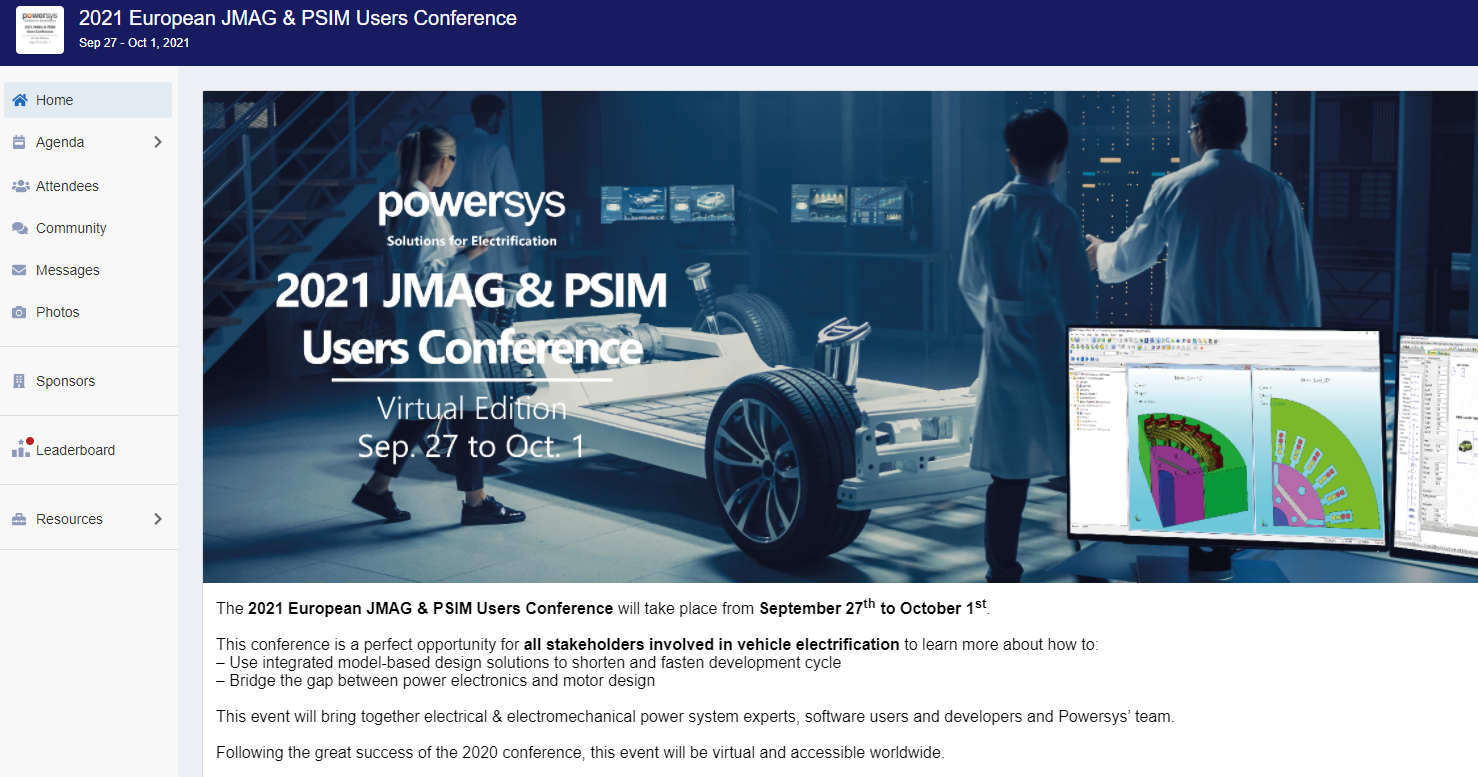
SPEAKERS

Pascal Bayrasy
Pascal Bayrasy joined Fraunhofer SCAI in 2003 where he started working on the multiphysics framework MpCCI. In 2012 he took over the responsibility for the product development. His main focus is currently on simulation process development, multiphysics simulations in electrical components.
Fabio Brucchi
Fabio Brucchi got his M.Sc.E.E. at the University of Rome, “La Sapienza” in 1998. He started his career at ENEA – Governmental Research Centre for EV and HEV - as a Researcher in 1998. He moved to SEMIKRON Italy Srl in 1999, where he covered several job functions in the power electronic space: from R&D Eng., to Sr. designer, to Product Manager and finally as R&D Manager. Then, in 2009 he moved to Woodward – IDS Group, Zurich, Switzerland, covering the function of Sr. Designer Engineer for High Power Stacks in Wind and Solar applications. Afterward, in 2011 he joined INFINEON Technologies A.G. in Villach, Austria, where he covered several technical functions in the IGBT and SiC-MOSFET space: from Staff Engineer, to Senior Engineer, to Principal. He left INFINEON in 2017 going back in SEMIKRON as Application Manager and Sr. Expert Power Semiconductors. In his career he was granted with 23 patents and wrote 25 scientific articles. Most important achievements, amongst others, are: invention of the SEMITOP 3CIB and the SEMITOP4 (12mm Industrial standard modules), Formula ATA EV winner in 2006, SEMIPONT 5/6 (17mm standard modules), IGBT technology Trenchstop™5 S5 L5 and WR5, Silver Medal innovation in INFINEON 2016, TO247-4 Leads and Advanced Isolation discrete packages.
Elia Cipolato
Born in Venice in 1986, Elia obtained his Master’s Degree in Mechanical Engineering at Trieste University in Italy. He gained the opportunity to develop his Master’s Thesis at MTU Friedrichshafen (now Rolls Royce Power Systems), Germany, using Computational Thermo-fluid Dynamics (CFD), Multi-Objective Optimization and Machine Learning techniques, applied to turbomachinery design. After obtaining his MSc, he works for an official Ansys reseller in Italy (EnginSoft SpA) as CFD Project Engineer. During these years he acquired a deeper knowledge of CFD and how to apply it into many different application fields as: Automotive, Aerospace, Energy, Oil&Gas, Railway and Shipbuilding, gaining at the same time more experience in different disciplines as: aerodynamics, heat exchange, turbomachinery, turbulence. Moreover, he increases his knowledge of High Performance Computing by everyday use. He is currently employed by Hexagon MSC Software as CFD Project Manager, coordinating all the activities covered by CFD in Italy, using and distributing Cradle CFD, the official solution for Computational Thermo-fluid Dynamics of Hexagon MSC Software.
Jordi Clos Garrido
Jordi Clos Garrido was graduated in Electrical Engineering at UPC in 2018 and was also rewarded with the best academic diploma of the promotion for UPC and best electrical engineer in Spain for SEDEA organization. Last year he finished his second degree in Industrial Electronics & Automatics at UPC, which enables him to fulfill his knowledge expectations. His passion has always been power electronics, so while studying in university he got involved with electric Formula Student project for four entire years. There he learned a lot about teamwork, competition and real application of power electronics in an 80kW single-seater racecar. Since then, he knows that he wants to develop and improves his knowledge about it. Nowadays he is planning to study a Master’s degree in Power Electronics in order to gather the necessary knowledge to join at power electronics industry and continuously research to improve power systems like batteries, static converters, solar systems and electric machines in both hardware and software levels. Jordi Clos Garrido is currently working as Software Engineer inside Automotive world in Barcelona.
Björn Deusinger
Björn Deusinger was born in 1986 in Frankfurt, Germany. He received his diploma degree in Electrical Engineering in 2013 and his doctoral degree in 2020 from TU Darmstadt. Since 2013 he is with the Institute of Electrical Energy Conversion at the TU Darmstadt as a research assistant. His research interests are electrical machine design for traction and industry drives, and efficiency determination of electrical machines.
Mohamed Essam Ahmed
Mohamed Essam was born in Cairo, Egypt, in 1993. He received his BSc in Electrical Power and Machines Engineering. from Cairo University, Egypt, in 2016. He received his MSc in Electrical Energy and Mobility Systems from Carinthia University of Applied Sciences, Austria, in 2019. Master Thesis: “Design of Hairpin PMSM for Automotive application”. Since 2019, he has been with AVL List GmbH as e-Drive Simulation Engineer, engaged with e-machines and e-motor drive control developments for xEV.
Zariff Gomes
Zariff Meira Gomes has received the B.S. degree in electrical engineering in 2013 and the Master degree in electrical engineering in 2015 from the University Federal of Paraíba, João Pessoa, Brazil. He is currently working in the wireless charging systems team at Institute VEDECOM, Versailles, France. His research interests include the mathematical modeling of complex systems, system optimizations, wireless power transfer, power electronics and embedded systems.
Vinayak Gupta
Vinayak Gupta is a Graduate Mechanical Engineer working for Jaguar Land Rover India. He is working with the Design of Electric Machines in JLR’s Electric Powertrain, since September 2020. He graduated with a B. Tech in Mechanical Engineering, from Indian Institute of Technology, Bombay in 2020.
Tahar Hamiti
Tahar Hamiti was born in Larbaa Nath Irathen, Algeria, in 1979. He received the Ingénieur d’Etat degree in automatic control systems from the University of Tizi-Ouzou, Algeria, and the Ph.D. degree in electrical engineering from the University of Lorraine, France. From 2010 to 2015, he was a Research Fellow and subsequently a Lecturer within the Power Electronics, Machines and Control Group, at The University of Nottingham, UK. In 2015 he joined VEDECOM, a French institute for energy transition to work on novel electrical machines for electric and hybrid vehicles. In 2018, he joined Emotors, a joint venture of PSA Group and Nidec Leroy-Somer to work on future machines for xEV applications. His research interests include modelling, design, and control of electrical machines for transportation applications and power generation.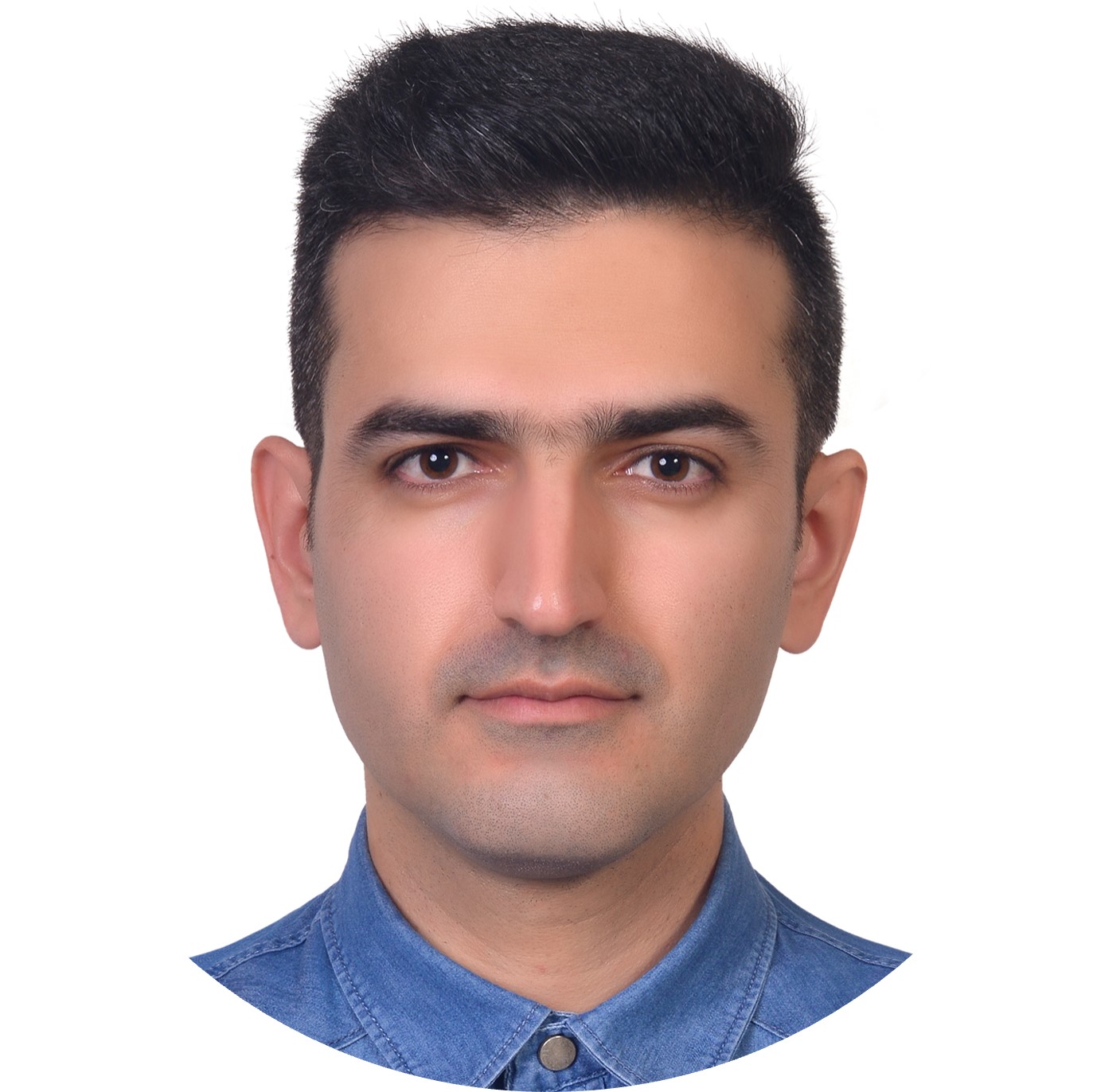
Naser Hassanpour
Naser Hassanpour was born in Tabriz, Iran, in 1990. H completed his bachelor and master studies in the University of Tabriz, Iran from 2008 to 2016. During and after his master studies he has researched in the field of DC-DC converters with the application of renewable energies, and he has published three papers. One conference paper in IEEE PEDSTC and two journal papers in the “International Journal of Circuit Theory and Applications, Wiley” and the “Journal of Power Technologies, Warsaw”. He joined the Tallinn University of Technology, Department of Electrical Power Engineering and Mechatronics as PhD student in March 2021. Currently, his research field is Partial Power DC-DC Converters (PPCs) for residential energy storage systems.
Siavash Heydarzadeh
Siavash Heydarzadeh was born in Tehran, Iran, in 1988. He received the B.S. degree in electrical engineering in 2011, and the M.S. degree in electronic engineering from SRBIAU, Tehran, Iran, in 2013. He is currently working as a research engineer in Photonic-Department of V-research institute and co-operated with Zumtobelgroup and Tridonic GmbH R&D departments. His research and work include power converter circuit design, HF SMPS, digital control.
Hua Jin
Dr. Hua Jin received the Bachelor degree from Hunan University, China, in 1984, and Master and Ph.D. degrees from University of Toronto, Canada, in 1987 and 1991, all in electrical engineering. From 1991 to 1999, he worked at Concordia University and the University of British Columbia, Canada, as a professor engaging in teaching and research in power electronics and motor drives. He founded Powersim Inc. in 2001, and is currently the president of the company. He is the original developer of the PSIM software.
Robin Köster
Robin Köster was born in 1993 near Frankfurt, Germany. He received his Master of Science in Electrical Engineering in 2018 and his Master of Science in Condensed Matter Physics from TU Darmstadt in 2020. Since 2019 he is with the Institute of Electrical Energy Conversion at the TU Darmstadt as a research assistant. His field of research are electrical machines, especially direct-drive synchronous machines for wind turbines and superconducting rotating machines.
Egor Kulik
Egor Kulik was born and lives in the city of Moscow, Russia. He received the B.Sc. degree from Moscow Power Engineering Institute, Moscow, Russia, in 2016 and the M.Sc. degree from Moscow Power Engineering Institute, Moscow, Russia, in 2018. Currently he is PhD. student (3rd course) of the Department of Electric Drives, Moscow Power Engineering Institute. The topic of the dissertation is related to the development of high-reliable electric drives for transport. He also works in a R&D company for the development of traction electric drives and power converters as a hardware/software design engineer. He likes music, travel and cross-country skiing.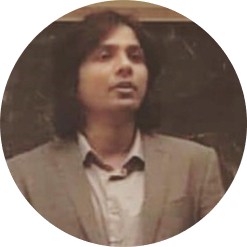
Amit Kumar
Amit Kumar is a technical application engineer with Powersim. He completed his B. Tech from Nit Allahabad. He then did his MASc. from Queen's University, Canada. He is a prime developer of design tools related to resonant LLC, resonant CLLLC, and some other power converters in PSIM. His day-to-day work includes technical support and the development of new tools for the ease of users.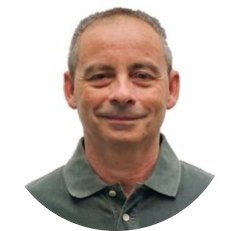
Antonio Lázaro
Dr. Antonio Lázaro, Professor at Carlos III University of Madrid and Technical Director at Power Smart Control S.L. Antonio Lázaro was born in Madrid, Spain, in 1968. He received the M. Sc. in electrical engineering from the Universidad Politécnica de Madrid, Spain, in 1995. He received the Ph. D. in Electrical Engineering from the Universidad Carlos III de Madrid in 2003. He has been an Assistant Professor of the Universidad Carlos III de Madrid since 1995. He has been involved in power electronics since 1994, participating in more than 80 research and development projects for industry. He holds 10 patents and software registrations and he has published nearly 140 papers in IEEE journals & conferences. His research interests are high-power DC-DC Converters, Power Factor Correction (PFC) Rectifiers, AC-DC inverters (railway and grid-connected applications), modeling and control of switching converters and digital control techniques. Dr. Lazaro has originated and leaded the development of the Software SmartCtrl. He is the co-founder and technical director of Power Smart Control S.L. a spin-off company of Carlos III University of Madrid focused on the development of SmartCtrl and hardware high added-value control solutions for power electronics (SoC-FPGA control, HIL systems, real-time FPGA variable logging, automatic test-benches, etc.).
Michele Merelli
Michele Merelli is a Project Engineer in Enginsoft Italy and Pre-Post Sale Manager for Particleworks Europe. His technical expertise spans e-motors cooling, consumer products and non-Newtonian fluids modelling.
Adrien Michel
Adrien MICHEL received his engineering degree in Energy (Electrical Engineering + Embedded systems) from UTBM (University of Technology of Belfort-Montbéliard), France, in 2015. Adrien is working at Powersys as support engineer since January 2016 and is taking care about Power Electronics Simulation software distributed.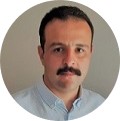
Vitor Monteiro
Vitor Monteiro was born in Guimaraes, Portugal. He received the Ph.D. degree in Electronics and Computers Engineering from the University of Minho, Portugal, in 2016. He is an Assistant Professor at the Department of Industrial Electronics, School of Engineering, University of Minho, Portugal. He serves as Associate Editor of the IEEE Access, Associate Editor of the IET Power Electronics, Associate Editor of the IEEE Latin America Transactions, Topic Editor of the MDPI Electronics, Board Editor of the MDPI Energies, and Board Area Editor of the EAI Endorsed Transactions on Energy Web. He is also Associate Editor of the IEEE Transportation Electrification Community eNewsletter. He has published as author or co-author more than 175 peer-reviewed papers. His main research interests are related to power electronics applied to electric mobility, renewables, solid-state transformers, active power filters, energy storage systems, hybrid AC/DC grids, smart grids and smart homes, railway systems, wireless power transfer, and industrial applications.
Zoltan Nadudvari
Zoltan Nadudvari has finished his studies at the Technical University of Budapest as an electrical engineer, and his major was electrical machines and drive system. He started to work for Rolls-Royce Electrical (former Siemens eAircraft) in 2016. His department is working on electrical drive trains for electric and hybrid electric aircrafts. His role is the electromagnetic design of our motors and generators.
Shafigh Nategh
Shafigh Nategh (Senior Member, IEEE) was born in 1984. He received the B.Sc. and M.Sc. degrees in electric power engineering from Shahid Chamran University, Ahvaz, Iran, in 2006 and 2008, respectively, and the Ph.D. degree in electric power engineering from the KTH Royal Institute of Technology, Stockholm, Sweden, in 2013. He was first-ranked in both the B.Sc. and M.Sc. degrees. In 2009, he was with the Department of Electrical Energy Conversion, KTH Royal Institute of Technology. He was a Visiting Scholar with the University of Illinois at Urbana-Champaign, Urbana, IL, USA, from 2012 to 2013. From 2013 to 2015, he was a Lead Designer of PM machines for marine segment with Rolls-Royce Group, Trondheim, Norway. He continued his career as a Senior Designer of traction motors and Global Product Engineer for railway applications with Bombardier Transportation, Västerås, Sweden, from 2015 to 2018. From 2017 to 2018, he was a Guest Researcher with KTH Royal Institute of Technology, Stockholm, Sweden. He worked as an R&D Senior Engineer at E-mobility Department, ABB AB, Vasteras, Sweden, 2018-2020. He is currently a Principal Engineer at Electric Driveline Department, Volvo Cars, Göteborg, Sweden, as well as Adjunct Associate Professor at Chalmers University of Technology. He serves also as Secretary of Electrical Machines Technical Committee, IES-IEEE. His research interests include different aspects of electromagnetic, thermal, and insulation design of traction motors in marine, aerospace, railway, and e-mobility applications.
Nirmalya Panigrahi
Nirmalya Panigrahi is a Graduate Mechanical Engineer working for Jaguar Land Rover India. He is working with the Design of Electric Machines in JLR’s Electric Powertrain, since September 2020. He graduated with a B. Tech in Mechanical Engineering, from Indian Institute of Technology, Kharagpur in 2020
Ji Qi
Ji Qi received the B.Sc. and M.Sc. degrees in electrical engineering from the School of Electrical Engineering, Southeast University, Nanjing, China, in 2016 and 2019, respectively. He is currently working toward the Ph.D. degree in electrical engineering at the University of Sheffield, Sheffield, U.K. His current research interest is the design of high-performance hub machine for electrical vehicles.
Bharadwaj Raghuraman
Bharadwaj Raghuraman was born in 1993. He received the masters degree in electric power engineering from the Chalmers University of Technology, Gothenburg, Sweden, in 2019. He was working as a powertrain engineer with the Mercedes – Benz Research and Development, Bangalore, India, from 2015 to 2017. From 2017 to 2018, he was a project engineer of electric machine and inverter for Chalmers Formula Student. He is currently a Design Engineer with the Electric Driveline Department, Volvo Cars, Göteborg, Sweden. His research interests include different aspects of electromagnetic and thermal design of traction motors in e-mobility applications.
Michele Merelli
Michele Merelli is a Project Engineer in Enginsoft Italy and Pre-Post Sale Manager for Particleworks Europe. His technical expertise spans e-motors cooling, consumer products and non-Newtonian fluids modelling.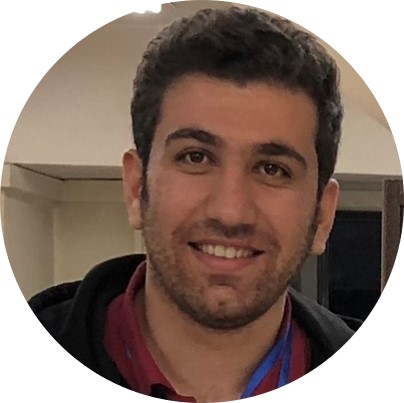
Nejat Saed
Nejat Saed received the B.Sc. and the M.Sc. degrees in electrical engineering from Shahid Beheshti University and Amirkabir University of Technology (Tehran Polytechnic), Tehran, Iran, in 2015 and 2018, respectively. He is currently working toward a Ph.D. degree in electrical engineering at the Electric Drives and Machines Institute at the Graz University of Technology, Graz, Austria. He is also with the Christian Doppler Laboratory for Brushless Drives for Pump and Fan Applications and his research interests include the noise and vibration of electric machines and fractional horsepower electric drives.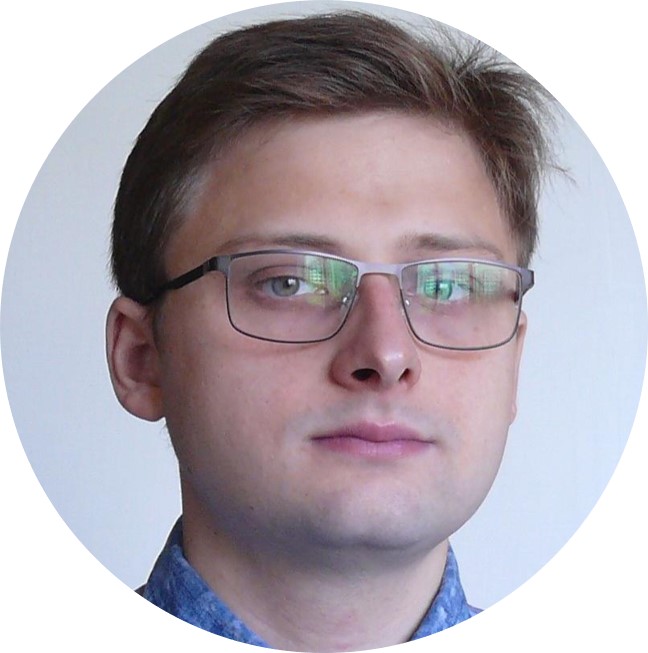
Vladimir Semin
Vladimir Semin has studied electrical engineering with the focus on electrical machines at the Moscow Power Engineering Institute, graduating with a Master’s degree in 2015 and power electronics at the TU Ilmenau as part of an academic exchange program, receiving his Master’s there in 2014. Between 2012 and 2019 he has worked in the space industry in Russia (Roskosmos). Since 2020 he is employed at the Heilbronn University of Applied sciences as a research assistant, where he is also working on his PhD thesis.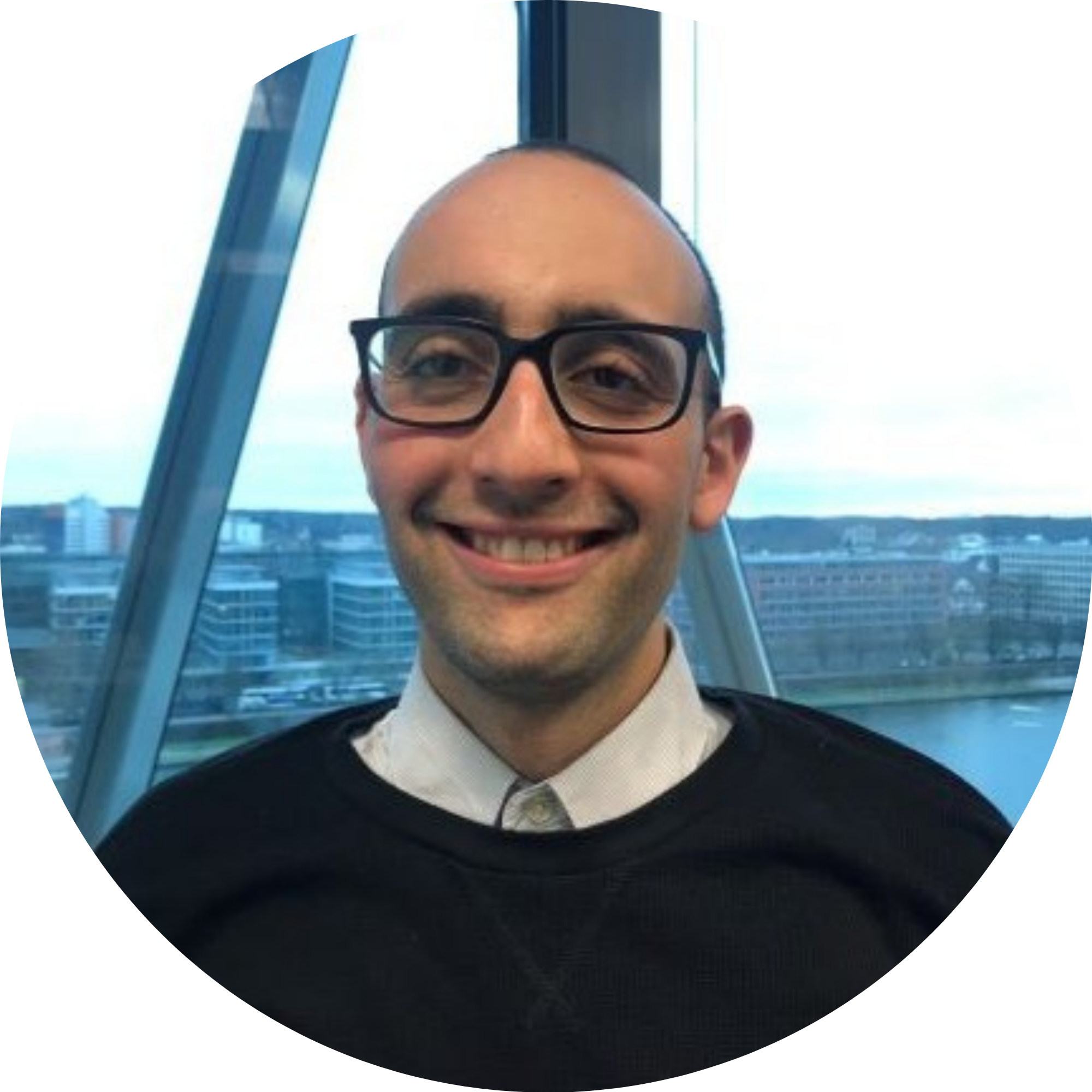
Ahmed Shoeb
Ahmed received his master degree specializing in Finite element method simulations. Currently, he is working as Electromagnetic simulation engineer at Powersys SARL since April 2019. Responsible for the supervision and the support of customer projects using JMAG software developed by JSOL corporation in Japan. In addition, he is in charge of customer trainings, webinars and the conduction of simulation studies.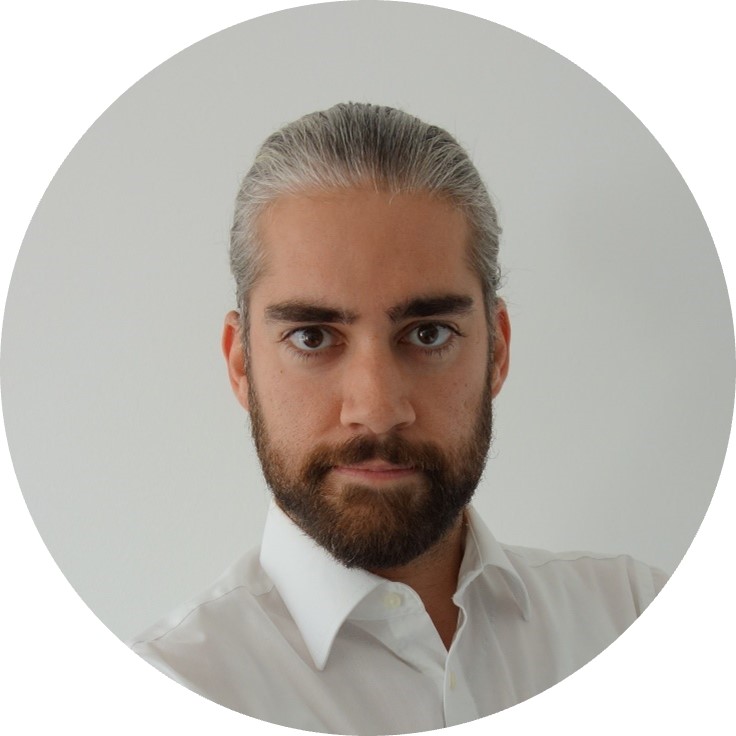
Peter Stopp
Peter Stopp studied automotive engineering at the university of Stuttgart. He joined Gamma Technologies end of 2010. He used to work in the thermal management team, meanwhile focusing on vehicle and electrification topics.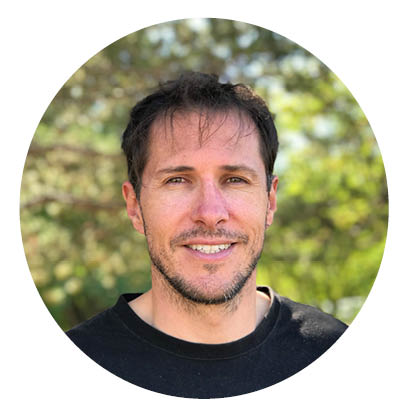
Yves Thioliere
Yves is reconizable as an Expert of JMAG software with more than 10 years experience in electric machine design using the FE method with JMAG. He has given numerous training courses and is also daily supporting JMAG users in electric machine design and other areas. Latest Co-publication: A Comparison Between Random and Hairpin Winding in E-mobility Applications; IECON conference 2020.
Amedeo Vannini
Amedeo Vannini received both the B.Sc. degree in Energy Engineering and the M.Sc. degree cum laude in Electrical Engineering from the University of Pisa (Italy) in 2017 and 2020, respectively. He enrolled then in the Ph.D. in Electrical and Electronic Engineering at the University of Nottingham (UK) under co-supervision by the University of Pisa (IT), where he is presently a Visiting PhD. His main research interests include the modelling, analysis and design of electric machines, in particular permanent magnet, induction and homopolar, for various applications including industrial motors and generation systems also for aerospace.
Takashi Yamada
Takashi Yamada, PhD, the CTO of JMAG division at JSOL Corporation, has been head of JMAG project since he joined the company at 1987. He started his professional career as a developer of FEM code and has been involved in numerous product development projects in industries. He is now in the role of product design of JMAG as well as the international business operation. Besides the company business, he has been working for society of IEEJ (Institution of Electrical Engineering of Japan) and serving as a member of Investigation Committee on Electromagnetic Field Analysis for Rotating Machine.
Didier Zefack
Didier ZEFACK has more than 7 years of experiences as JMAG Simulation & Support Engineer at POWERSYS Solutions. He supported many companies and universities on different simulation projects. He received two Professional master’s degrees, first, in Computational Engineering for FEA simulations of phenomena governed by the fluid & solid mechanics. And secondly in Mechatronic for synergistic integration of mechanical engineering, electronics and intelligent computer control in design and manufacture of products and processes. In addition to JMAG, he works also on Multiphysics CFD tools to provide a complete solution for electric motor design and optimization.
